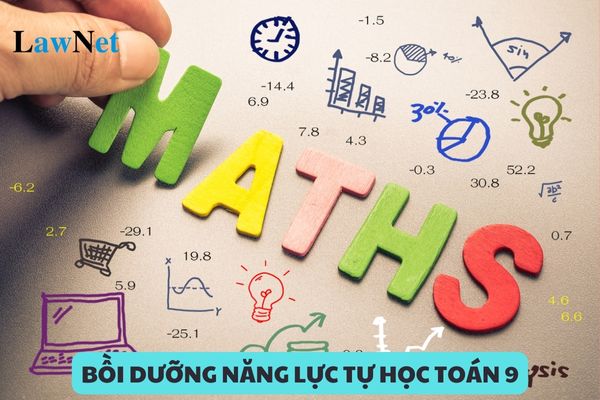All materials for enhancing self-study mathematics competency for grade 9 according to the new curriculum in Vietnam
All materials for enhancing self-study mathematics competency for grade 9 according to the new curriculum in Vietnam
Based on the general education mathematics program issued together with Circular 32/2018/TT-BGDDT, the duration of the Grade 9 mathematics program is 140 periods and allocated as follows:
- The duration of the program accounts for 43%
- Geometry and Measurement account for 36%
- Statistics and Probability account for 14%
- Practical activities and experiences account for 7%
Refer to the self-learning mathematics 9 materials below:
Material on self-learning mathematics 9 solving systems of linear equations in two variables Download
Material on self-learning mathematics 9 equations reduced to linear equations in one variable Download
Material on self-learning mathematics 9 radicals Download
Complete set of self-learning mathematics 9 materials
Note: The content is for reference only!!

All materials for enhancing self-study mathematics competency for grade 9 according to the new curriculum in Vietnam (Image from the Internet)
What are the minimum teaching equipment for Mathematics at the lower secondary schools in Vietnam?
Based on the general education mathematics program issued together with Circular 32/2018/TT-BGDDT, the minimum teaching equipment for lower secondary school mathematics is as follows:
- Numbers and Algebra: Includes teaching equipment sets for Integers and Operations with Integers; Percentages; Functions and Graphs.
- Geometry and Measurement: Teaching equipment sets for recognizing, describing shapes, and characteristics of some plane figures and solids; for practicing measurement, drawing, forming shapes related to learned planes and solids.
- Elements of Statistics and Probability: Teaching equipment sets for Statistics and Probability.
Additionally, the use of teaching equipment for Mathematics needs to meet the following requirements:
- Teaching equipment must serve the educational objectives of the Mathematics subject, suitable for the content and the students, support the innovation of teaching methods, and avoid increasing the teaching content, teachers' workload, or unnecessary costs.
- Use them at the right time and place, avoid formality or overuse that would backfire and reduce the effectiveness of the teaching process; create conditions for students to truly practice and manipulate teaching equipment, thereby helping students actively and positively explore, discover knowledge, and contribute to developing "the ability to use tools and means to learn mathematics."
- Encourage the use of audio-visual means, modern technical means to support the teaching process, while valuing the use of traditional means. When conditions permit, teachers guide students on how to search for information and materials on the Internet or reputable educational television programs to expand their understanding and self-learning ability.
- Increase the use of self-made teaching equipment: Besides the minimum teaching equipment stipulated in the list issued by the Ministry of Education and Training, mobilize the initiatives and creativity of students, teachers, and parents in exploiting, designing, and using self-made teaching equipment.
- Flexibly combine various types of teaching equipment: Each type of equipment has certain advantages and limitations, so depending on the lesson content and teaching methods, different types of teaching equipment can be combined and coordinated reasonably, scientifically, and lively.
What is the age of Grade 9 students in Vietnam?
According to the provisions at Clause 1, Article 28 of the Education Law 2019:
Grade Levels and Ages in General Education
- The grade levels and ages of general education are specified as follows:
a) Primary education is conducted over 05 years, from grade one to the end of grade five. The age of students entering grade one is 06 years, calculated by year;
b) Lower secondary education is conducted over 04 years, from grade six to the end of grade nine. Students entering grade six must have completed the primary education program. The age of students entering grade six is 11 years, calculated by year;
c) Upper secondary education is conducted over 03 years, from grade ten to the end of grade twelve. Students entering grade ten must have a lower secondary school diploma. The age of students entering grade ten is 15 years, calculated by year.
Based on the above provisions, the birth year and age of secondary school students in 2024 are calculated as follows:
| GRADE | AGE |
| Grade 6 | 11 |
| Grade 7 | 12 |
| Grade 8 | 13 |
| Grade 9 | 14 |
Thus, according to the regulations and the above table, grade 9 students by 2024 will be 14 years old.
Note: The above age calculation does not apply to cases of grade skipping or late education exceeding the prescribed age.

